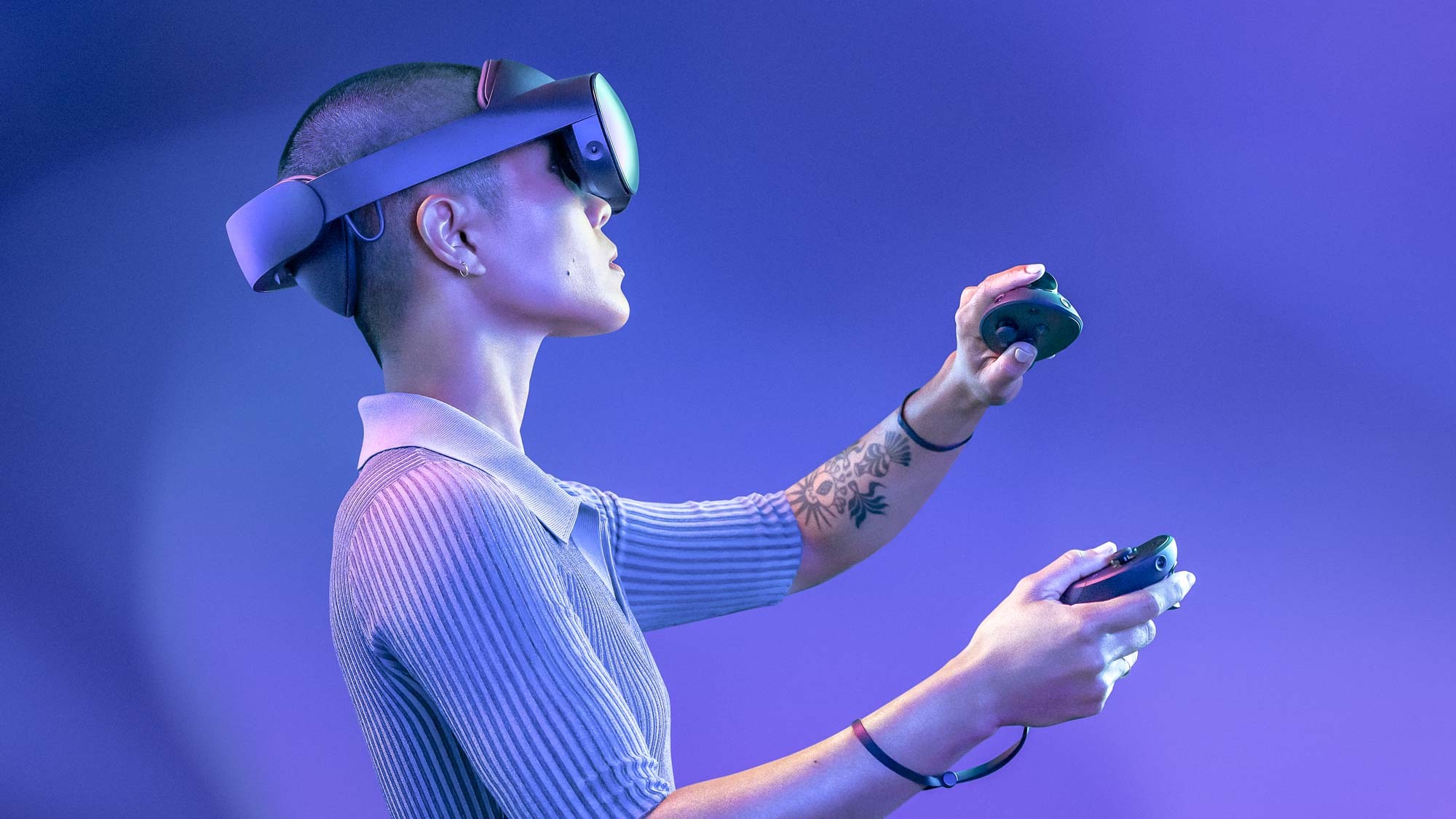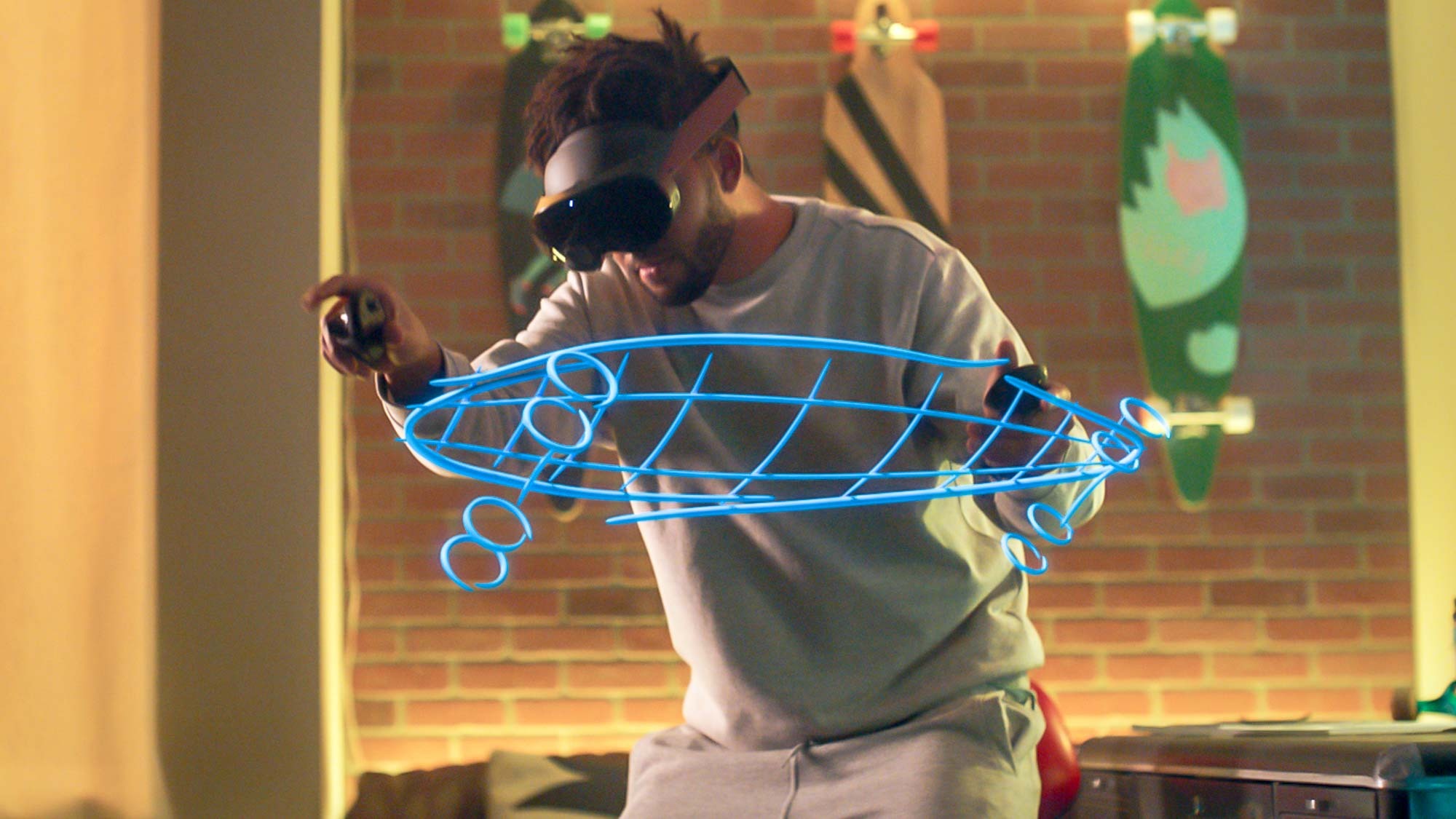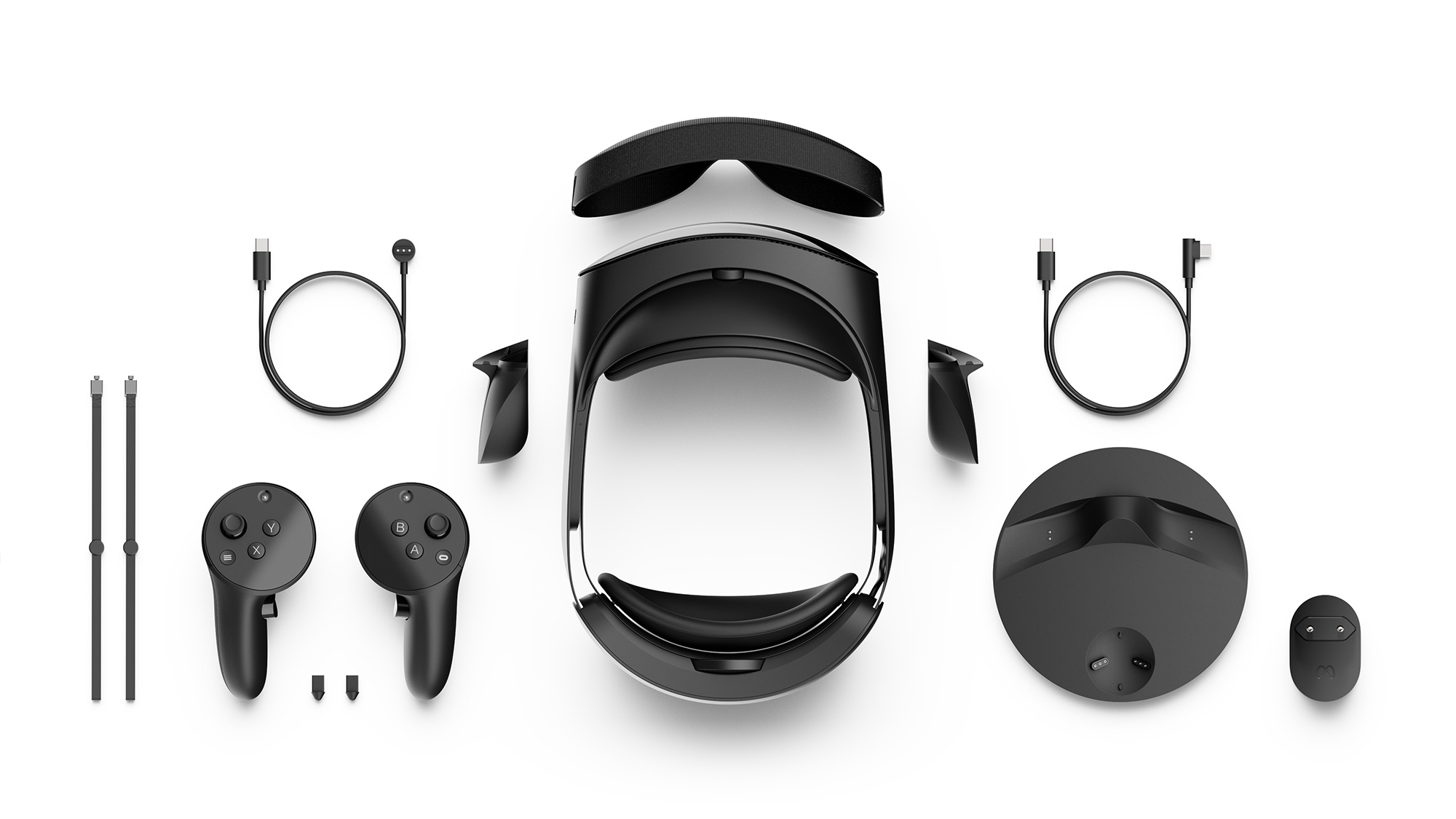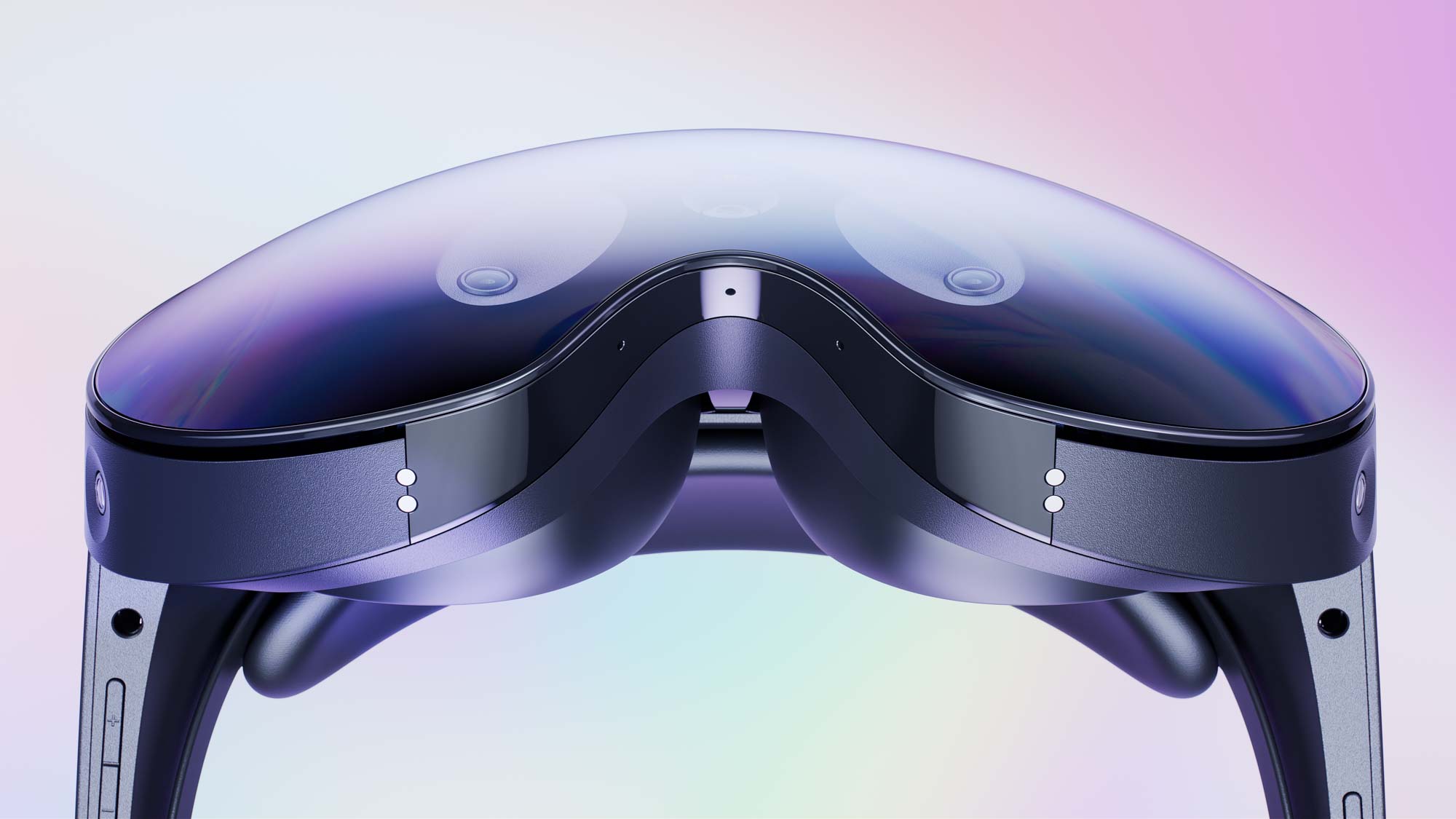Meta Quest Pro — here's what we know

The Meta Quest Pro is a new high-end mixed reality headset from Meta, Facebook's parent company, and marks a shift away from more traditional virtual reality into one that blends VR and augmented reality.
Revealed at the Meta Connect 2022 event the Quest Pro looks to go beyond putting you in a fully enclosed virtual world and instead bring the real world around you into your virtual reality experience.
But this won't come cheap. At $1,499, the Quest Pro is easily one of the most expensive virtual reality/mixed reality headsets on the market. It is certainly the most expensive mainstream headset, though the HTC Vive Pro 2 Full Kit comes close at $1,399.
Despite this high-end price tag, the Quest Pro is still partially aimed at consumers, which sets it apart from headsets like the Microsoft HoloLens 2, an enterprise device.
Furthermore, based on the most recent Meta Quest 3 rumors, it appears that Meta Quest is trying to have an entry-level and high-end option in its portfolio at all times so it can reach as broad an audience as possible. The Quest Pro is backwards compatible, so don't expect the Meta Quest 2 to go away just yet either.
Without further ado, here's everything we know about the Meta Quest Pro.
Meta Quest Pro cheat sheet
- With a price tag of $1,499, the Meta Quest Pro represents Meta's first high-end device.
- The Quest Pro features full-color mixed reality, potentially signaling a shift from strictly virtual reality devices.
- Quest Pro will be backwards compatible with the Meta Quest 2 app catalog.
- Pancake optics appear to be the new VR/MR standard after their inclusion in the Quest Pro and the PICO 4.
Meta Quest Pro mixed reality

The biggest headline is that the Meta Quest Pro is a shift into mixed reality, which blends the full immersion of virtual reality with the more additive experience of augmented reality pioneered by devices such as Google Glass. The Quest Pro achieves this through "Full Color Mixed Reality," which uses outward-facing cameras to recreate your surrounding environment with the Quest Pro display.
Get instant access to breaking news, the hottest reviews, great deals and helpful tips.
In the Project Cambria reveal, the name formerly given to the Quest Pro, Meta CEO Mark Zuckerberg touched on the headset's augmented reality potential.
“Imagine working at your virtual desk with multiple screens, while seeing your real desk so clearly that you can pick up a pen and write notes without taking your headset off,” Zuckerberg said. “Or you’re doing a workout with a virtual instructor in your living room."
Such capabilities would suggest it will be positioned to compete with the rumored Apple mixed reality headset, Apple Glasses, as well as Google's rumored Google AR headset.
In a recent video, Mark Zuckerberg took the Meta Quest Pro headset for a spin. While the headset was blurred out, he did show off how its passthrough system provides clear, colorful AR images superimposed on the real world.
Meta Quest Pro release date and availability
The Meta Quest Pro is available for pre-order now through the Meta Store in 22 countries, including the U.S., U.K., Canada and France. Amazon is also offering the headset for pre-order in those four countries.
The other 18 countries, such as Australia, will need to pre-order directly through Meta's online store. All pre-orders will start shipping on October 25, 2022.
In the U.S. customers will also be able to pre-order the Quest Pro from Best Buy in-store and online. In the U.K. customers will be able to pre-order online from Argos and from Curry's both in-store and online. In France, your in-store pre-order options are FNAC and Boulanger.
In Canada, the device can only be ordered online, but Best Buy is an alternative if Canadian customers prefer not to order through Amazon or Meta's online store.
Meta Quest Pro price
Meta Quest Pro is $1,499 in the U.S., £1,499 in the U.K. €1,799 in the E.U., and around AUD$2,371 It only comes in a 256GB storage model.
There are also a few accessories for the Quest Pro. While it comes with a charging dock, users can purchase the Meta Quest Pro Compact Charging Dock for $79/£89/€99/around AUD$124. This dock charges the Meta Quest controllers and any Meta Quest headset that uses a USB-C connection. The Meta Quest Pro VR Earphones are $49/£49/€49/around AUD$77 and allow for a more immersive experience by tuning out background noise. Both accessories are available for pre-order now and ship on October 25.
The Quest Pro also has a Full Light Blocker available for purchase for $49/£49/€49/around AUD$77. It allows users to block incoming light and can be pre-ordered now with an expected ship date of November 22, 2022. While we don't have official guidance from Meta, there is a chance that the use of the Full Light Blocker will impact the Quest Pro's mixed-reality functionality.
Meta Quest Pro specs

There is only one model for the Meta Quest Pro. The headset comes with a Qualcomm Snapdragon XR2 Plus, an upgrade over the Snapdragon XR2 featured on the Meta Quest 2. Meta says that the Quest Pro will be 50% more powerful and allow for significantly better performance due to improved thermal dissipation.
In terms of additional hardware, the Quest Pro also features 12GB RAM and 256GB storage. There are 10 virtual reality and mixed reality sensors located throughout the device, and the headset features spatial audio.
Unfortunately, one area where the Quest Pro falls short is the battery life. The Quest Pro only lasts one to two hours on a single charge. This is a step down from the two to three hours of battery life on the Meta Quest 2, though the more powerful hardware could be the culprit here. The Quest Pro uses a 45W fast charging dock that can charge the headset in two hours and users can also use the two-meter (6.5-feet) charging cable to charge the headset while it is in use.
Meta Quest Pro design
Meta claims that the Quest Pro features a premium design with world-class counter-balanced ergonomics. Buzzwords aside, the images of the Quest Pro do indicate a very balanced headset design, with the curved battery pack at the back of the headset providing fairly even weight distribution. Hopefully, this will offset the weight that the Quest Pro has put on since the Quest 2 — at 1.59 pounds (722 grams) it weighs noticeably more than the Quest 2 or the PICO 4.
The good news is that Meta appears to be getting the most out of the Quest Pro's limited space. Smaller Wi-Fi antennas allow for Wi-Fi 6E connectivity that can deliver up to 1.6 GBps in just half the space. Meta says these new antennas will allow for fully untethered virtual reality on your PC.
Pancake Optics also allows Meta to maximize the space of the Quest Pro. Pancake optics debuted on the PICO 4 headset and have long been rumored for the Quest Pro. This technology uses thin layers in the display to create increased pixel density in a smaller space. Despite needing just 60% of the space needed on the Meta Quest 2, the Quest Pro features two 1800 x 1920 pixel displays. Even though this is not a nominal upgrade, it provides a 37% increase in pixels per inch and a 10% increase in pixels per degree compared to the Quest 2.

One surprising downgrade is the display refresh rate. The Quest Pro display features a 90Hz max refresh rate, a noticeable step back from the 120Hz max refresh rate of the Quest 2. However, the Quest 2 launched with a 72Hz max refresh rate, so the Quest Pro may eventually see updates that bring the refresh rate up to 120Hz.
The Quest Pro promises an upgrade in virtual reality voice presence. Its 3-microphone array is expected to provide over 20% better noise cancellation than the 2-mic array on the Quest 2. This could make the Quest Pro a better solution for meetings in virtual reality than its predecessors.
Finally, the Quest Pro promises flexible levels of immersion through the use of light blockers. By default, the device allows some light passthrough and open peripheral vision when using the headset. However, there are included light blockers that will allow for some light blocking and an available accessory (as previously mentioned) that allows for full light blocking while using the Quest Pro.
Meta Quest Pro additional features
The Meta Quest Pro controllers are self-tracking, which allows for a full 360-degree range of motion and feature improved haptic feedback. The goal is to make the controllers feel like a true extension of the user's hands.
While these upgraded controllers have applications across virtual and mixed reality, Meta clearly intends it to be a productivity upgrade as well. The controllers include a stylus tip for sketching and whiteboarding, highlighting the Quest Pro's potential as a workspace device.
There were some initial concerns that for all these upgrades that the battery life was abysmal. Many had been told that the controllers had similar battery life to the headset — just one to two hours. However, follow-up reporting from outlets such as Android Central found comments from Meta executive Andrew "Boz" Bosworth that indicate the battery life could be as high as eight hours, though most likely four to five hours.
Having longer battery life on the controllers is imperative for extended use of the Meta Quest Pro headset. While the headset can be charged with a USB-C cable while being used, the controllers must be charged via the included charging dock. That means once your controllers are dead the headset will no longer function until they're charged again.
Regarding other features besides the new controllers, Meta says it's also improving its metaverse avatars with the Quest Pro. Quest Pro features eye-tracking and Natural Facial Expressions that are designed to make your avatar mimic your actual facial expressions and eye contact. Again, Meta highlights the workplace applications of the Quest Pro, stating that these features will "be fully present in meetings and gatherings – letting you connect with friends and colleagues almost as if you were physically there."
One other productivity upgrade is the ability to open multiple resizable screens in the Quest Pro while staying in your physical space. This is a clear example of how Meta plans to involve mixed reality features in this new headset, and it will be interesting to see if the rumored Meta Quest 3 steers this much into mixed reality as well.
Finally, the Quest Pro is backwards compatible with the Meta Quest 2. That means that users wishing to upgrade will be able to access the best Quest 2 games and apps from the Quest Pro.
Meta Quest Pro outlook

The Meta Quest Pro is not for everyone — though Meta clearly designed it so it can be. Despite a focus on workspace and collaborative tools, those users who use their headset for games, workouts and entertainment will still feel at home using the Quest Pro.
However, unless you truly need the mixed reality features that the Quest Pro brings, the Quest 2 is probably the best device for you until the rumored Meta Quest 3 is release, hopefully next year.

Malcolm has been with Tom's Guide since 2022, and has been covering the latest in streaming shows and movies since 2023. He's not one to shy away from a hot take, including that "John Wick" is one of the four greatest films ever made.
